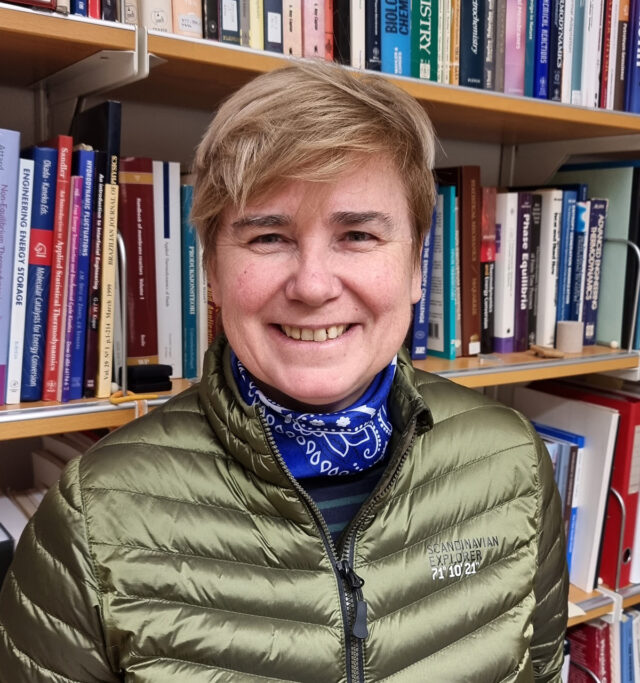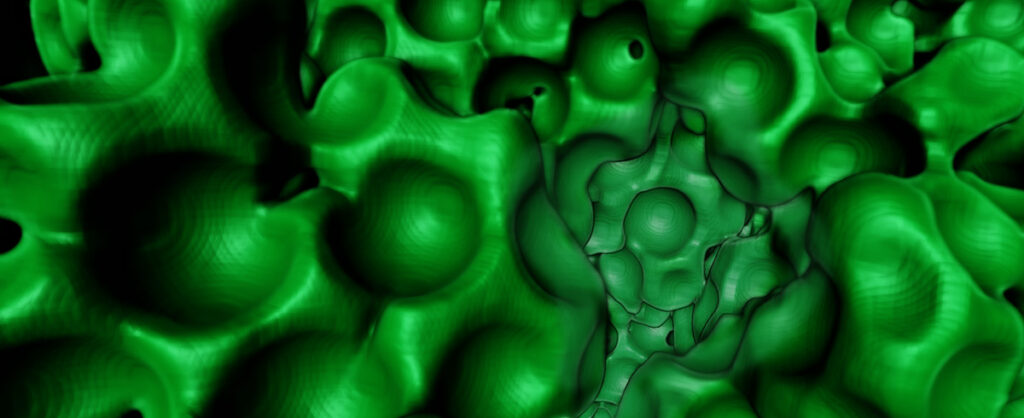
What is your role at NTNU and when did you join?
I joined NTNU’s physics department and PoreLab, which is a Norwegian Centre of Excellence for studying flow in porous media, just over a year ago.
My background is in soft matter physics. There are lots of materials that fall into this category: food, biological tissues, all sorts of liquids. Much of what I do is also related to nanoscience, because many fluids flowing through a porous medium are not simple Newtonian fluids like water, but actually show very complex flow behaviour.
There are world experts at PoreLab in the theory that underpins that behaviour, and I joined the group in order to provide my experimental expertise.
Can you tell me about PoreLab?
PoreLab is now in its sixth year. It’s highly interdisciplinary: we have people from chemistry, petroleum engineering, physics, geosciences, and other fields. The idea was to look at the thermodynamics of fluids going through porous media, which was originally motivated in principle by the oil industry. The question was: ‘Rock is very porous. How do I extract oil from porous rock?’ This is a completely non-trivial question.
But researchers at PoreLab study many types of porous media to understand how fluids move through them. For example, one group looks at the porous bone structure in a seal’s nose that seems to be designed to let them breathe even in very cold conditions without freezing the poor animal’s snout in the process.

How would you sum up your own research in a few words?
Today I work primarily on developing DNA-functionalized colloids: tiny, micron-sized particles, where we use DNA as a smart molecular glue or building block to make new, self-assembling soft materials for many different applications.
What collaborations do you have planned?
I was fortunate enough to meet some of my now-colleagues at NTNU a few years ago, while my husband was visiting as Onsager Professor. When I mentioned that I was interested in understanding how nanoparticles – nanoclays – influenced the flow properties of fluid, that brought me in touch with somebody from geosciences here. Now, we have six people together from three very different backgrounds to study how to stabilise clay-rich ground in Norway, for building on.
In Norway, when it rains a lot, some clay-rich regions all of a sudden show huge landslides, and the underlying reason is the nanoclays in the soil. They are usually stabilised with each other through ions, but heavy rain washes the ions out, and then the clays become very strongly negatively charged and repel each other. And that makes them extremely slippery.
To prevent catastrophic landslides we need to stabilise the land. Our existing methods are very CO2-producing – the production of concrete every year adds up to 6% of the total CO2 production around the world – so we need new methods. These might be plant polymers or recycled material – perhaps even recycled concrete or a construction industry by-product.
What else are you looking forward to working on?
A former PhD student of mine, now working at the Institute of Physics Chinese Academy of Sciences in Beijing, is following up the idea of using DNA-functionalized colloids as a very simple, in the field diagnostic tool to, for instance, figure out what bacterium you have when you have a bacterial infection, and therefore also what antibiotic you need to use. Two years ago we published a simulation paper explaining the principle, but now we are testing these ideas in experiments.
What motivates your work?
Learning from nature the principles it uses to build its own very complex machinery and tools.
Why did you choose NTNU?
I loved being in Cambridge, but when the UK decided to leave the EU, I was worried funding would go down, and I felt increasingly uncomfortable hearing more and more anti-European sentiment. So, I started thinking ‘Where should I go?’
From my time visiting PoreLab several years ago, I knew I enjoyed interacting with the people here. It’s an extremely relaxed and good working atmosphere and the science is top notch. I saw opportunities here that really appealed to me.
What do you most enjoy about your work?
I enjoy discussing with my students the next steps in their research, what to read, and exchanging ideas.
It’s also very rewarding when you see something completely new emerging. We use our colloids also to make photonic crystals – coatings with very intense colours, which you can also find in butterfly wings, or opals. When you see it all of a sudden happening in front of your eyes in the lab, and you see these beautiful colours, it’s just amazing. The joy is great.
What do you do in your spare time?
I love to cook, to travel, and to eat and sample new things all over the world. When you cook, it is creative and relaxing at the same time. In fact, the more I learn about soft matter, the more I also see it in action, happening when I cook.
Is there anything else someone should know about you?
Every now and then I have a publication on food science. One was on Chinese century eggs which are really quite cool: you can solidify eggs at room temperature, and once they are made you can keep them for a year and still eat them. My husband loves to eat them, but we were puzzled about why it is almost transparent, whereas when you have a hard boiled egg it’s white. So I figured out how to make it and then I wrote a paper.
When you heat eggs, you denature the proteins and they start to aggregate, rapidly forming thick clusters of micron size. That’s why egg whites are white – you have lots of globules and light is scattered. But Century eggs are coated in a high pH mixture which means the proteins can’t aggregate anymore in globular form. Instead, they form long, rigid rods in a mesh. These long rods are much thinner than visible light, and therefore you can’t see them.

